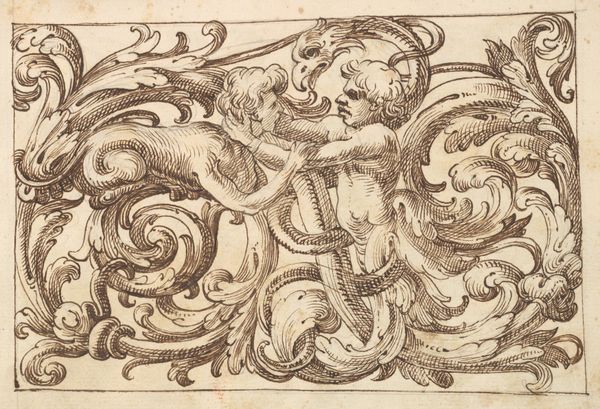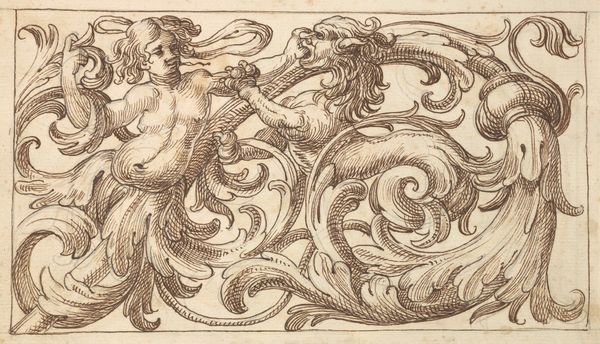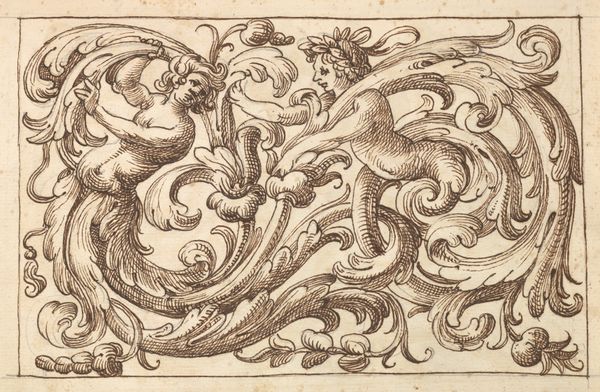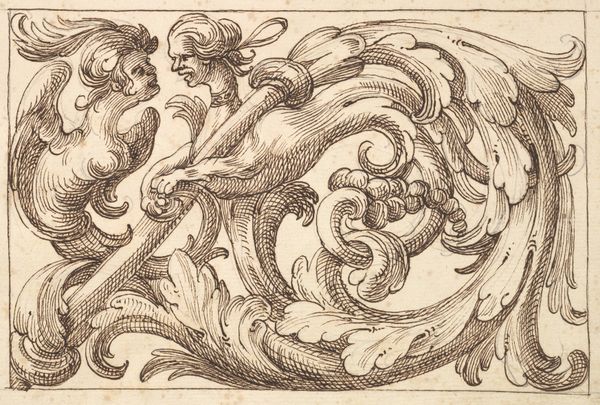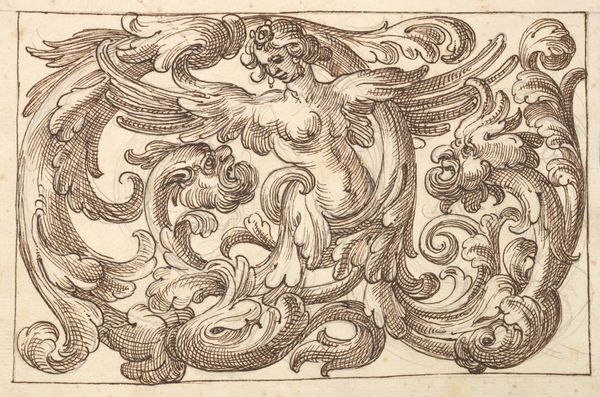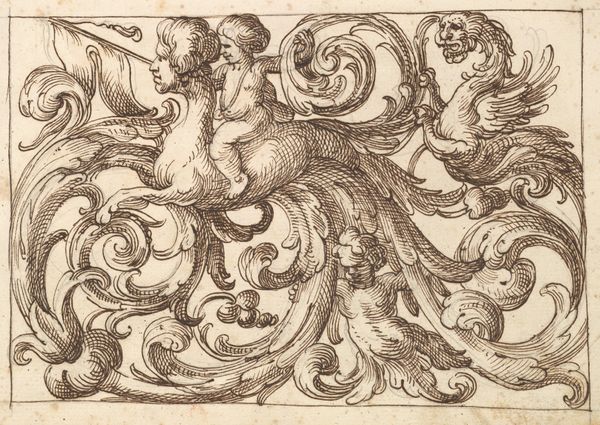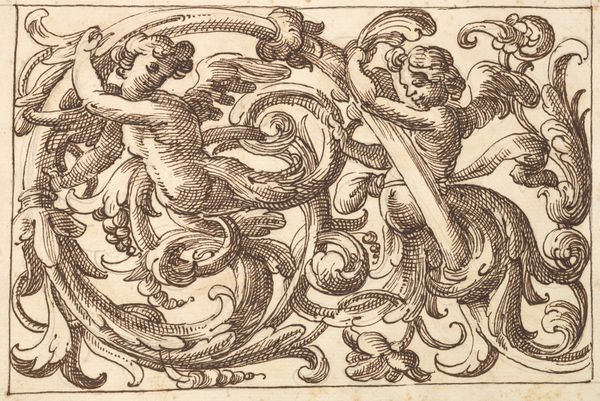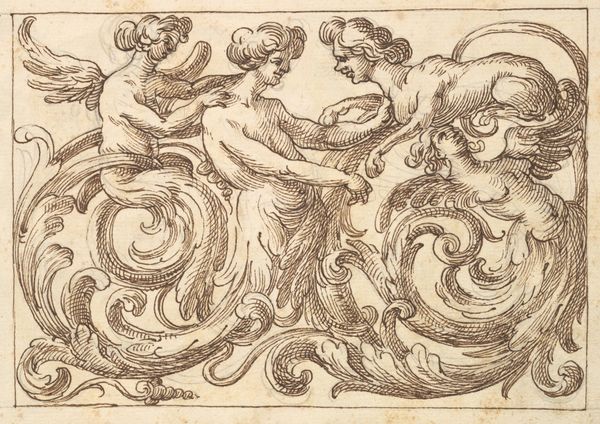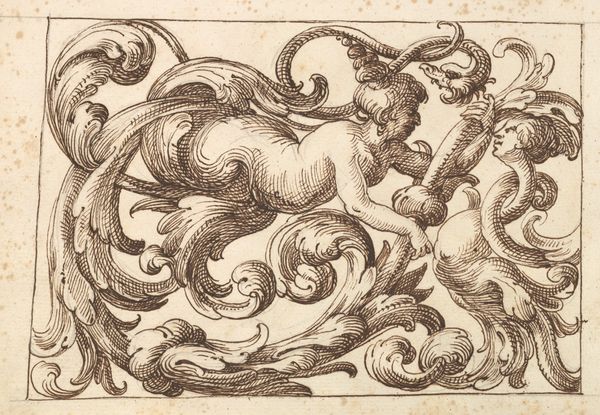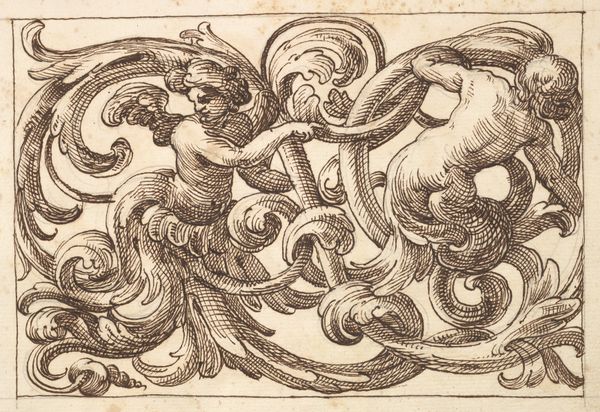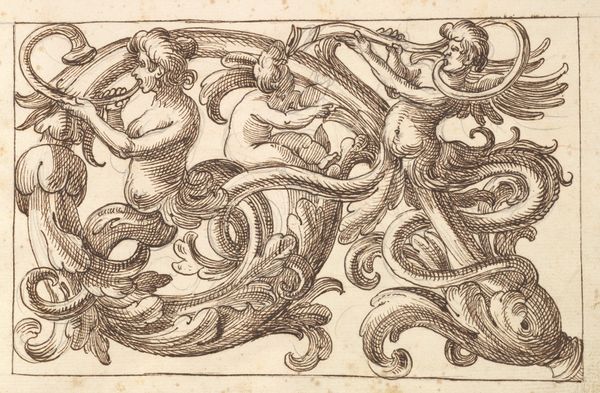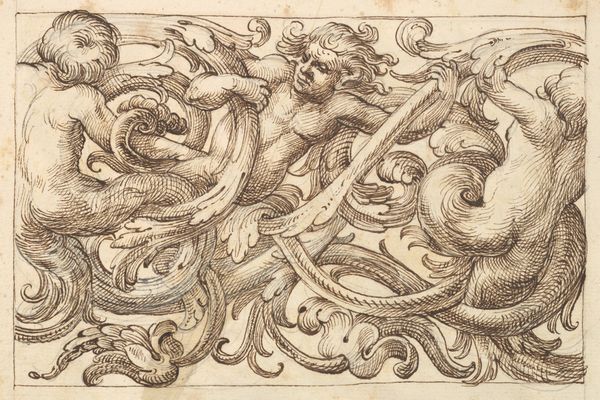
Horizontal Panel Design with a Man and Two Fantastical Creatures Interspersed between an Acanthus Rinceau 1600 - 1650
0:00
0:00
drawing, print, ink, engraving
#
drawing
#
baroque
#
pen drawing
# print
#
figuration
#
form
#
ink
#
engraving
Dimensions: Sheet: 7 3/16 x 10 1/8 in. (18.3 x 25.7 cm)
Copyright: Public Domain
Curator: This engraving, titled "Horizontal Panel Design with a Man and Two Fantastical Creatures Interspersed between an Acanthus Rinceau," was created by an anonymous artist sometime between 1600 and 1650. Editor: Wow, the density of the line work! It gives the whole piece this almost overwhelming sense of baroque drama, even at this relatively small scale. The textures must have been meticulously built, line by line. Curator: Absolutely. Consider the printing process here, too. Each line had to be physically cut into a plate, probably copper. This image likely functioned as a pattern, ready for reproduction. Editor: Yes, a template for something. The gendered dynamics leap out at me – this seemingly solitary male figure intertwined, almost imprisoned, within decorative foliage and mythical beasts. It evokes ideas of control, desire, the male body as both dominant and confined within societal expectation. Curator: The composition is clearly ornamental. The drawing would likely serve as an adaptable resource for artisans across various fields. Metalworkers or even textile designers might directly incorporate this design or repurpose its individual elements. Editor: That speaks to the practical function, but I also read into the human/animal hybridity – a literal monster in the margins of what we deem ‘acceptable.’ How were ideas about normalcy or deviance expressed and enforced through this design vocabulary? Curator: We could also explore the economy of ornamentation. How did the labor of producing these detailed engravings translate into the final products adorned with these motifs? Were they signs of luxury or tools for wider consumption? Editor: Right, it is about social hierarchies. Considering this object was reproduced on possibly an object for a wealthy person is in itself part of that complex historical legacy. Curator: Exactly! The endurance of certain motifs reveals how specific forms came to be linked to status and perhaps ideological significance. Editor: Definitely. This makes me consider the role of these images of pattern designs, in either oppression or resistance and the material conditions through which cultural ideologies solidify. Curator: I see it as a reminder of art's deep entanglement with labor and broader economic and decorative practice during this time. Editor: And a space where social and cultural meanings can be carved out, reinterpreted and renegotiated throughout time.
Comments
No comments
Be the first to comment and join the conversation on the ultimate creative platform.

